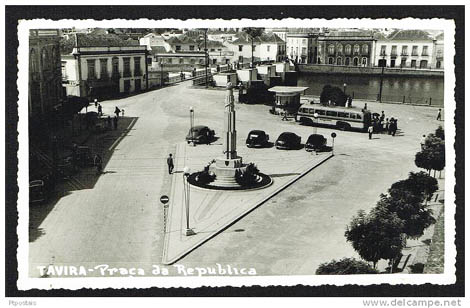 The second day of the presidential visit to the Algarve, February 16, 1932, started early. After a boat trip along the Ria Formosa, to observe the works on the canal Faro-Olhão and a brief visit to Olhão, General Carmona arrived by car in Tavira, at 12:30 pm.
The second day of the presidential visit to the Algarve, February 16, 1932, started early. After a boat trip along the Ria Formosa, to observe the works on the canal Faro-Olhão and a brief visit to Olhão, General Carmona arrived by car in Tavira, at 12:30 pm.
Waiting for him at the entrance to the city was a squadron of GNR cavalry. Tavira was “flagged, with quilts on the windows and a large crowd in the streets”, and in the square opposite the town hall, according to the newspaper “O Século”, “thousands of people were parked. Music bands played the «Portuguese». The guard of honor was made by a company of Infantry 4, with the band”.
The head of state forcefully reviewed it, “being covered with flowers thrown at him from the windows”, then watching his parade. “All the civil and military authorities, heads of departments, scouts, firefighters, Parish Councils, Montepio Artístico directors, directors of the Maritime commitment and the Civil Construction Association, directors and internees of Asilo Esperança Freire, teachers and students from Jara and António Padinha schools, director and deputy of the Posto Agrário, Fiscal Guard, etc. The crowd spread across the Praça da República and its surroundings, Rua da Liberdade and others”, wrote “O Século”.
The greetings session took place in the City Council's session room, with the mayor's president, Captain Baptista Marçal, greeting the head of state and other ministers, saying, according to “O Século”, that “his visit was a reason for pride for the Algarve and proof that the Government continued to show its desire to achieve the resurgence of the Motherland.”
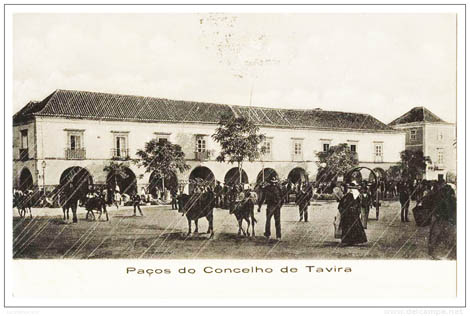 In turn, the President of the Republic thanked the “Algarve's reception, which evidenced the patriotism of this people and their sympathy for the Government”, also referring that “The Portuguese are, for the most part, good patriots. There are a small number of bad people, and that is why it is impossible for this small minority to be allowed to harm the general good”.
In turn, the President of the Republic thanked the “Algarve's reception, which evidenced the patriotism of this people and their sympathy for the Government”, also referring that “The Portuguese are, for the most part, good patriots. There are a small number of bad people, and that is why it is impossible for this small minority to be allowed to harm the general good”.
According to the “Diário de Notícias” the president also said that “the Government only wants everyone to help it, working to transform Portugal, so that all Portuguese can fit into it”.
After the session inside the town hall, the entire delegation headed to the outside square, to watch from a tribune to watch the laying of the first stone for the Monument to the Dead of the Great War[1].
The ceremony took place, in the words of “Diário de Notícias”, in front of “a huge crowd crowded in Largo do Município”. After the Firemen band played the “Portuguese” the speeches began.
The president of the municipality thanked the presence of the distinguished guests, noting that the monument would be a tribute of gratitude to the sons of Tavira who gave their lives for the country, and that its construction and conservation would be in charge of the Chamber.
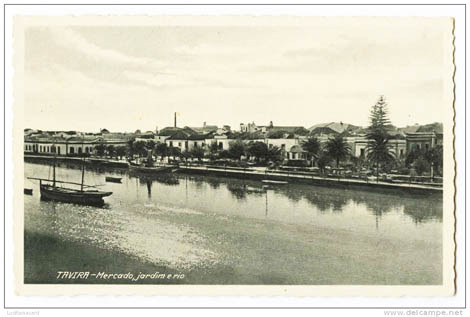 This was followed by Captain Galvão, representative of the League of Combatants of the Great War, who praised the presence of the head of state and ministers, later making some patriotic statements “appealing for the unity of the Portuguese, in order to, within the Republic, slaughter flags, there is only the ideal of the Homeland”.
This was followed by Captain Galvão, representative of the League of Combatants of the Great War, who praised the presence of the head of state and ministers, later making some patriotic statements “appealing for the unity of the Portuguese, in order to, within the Republic, slaughter flags, there is only the ideal of the Homeland”.
The first stone was read and signed by the president, ministers and other authorities, which, according to “O Século”, was “closed, with a collection of coins in progress, in a stone cavity, which Mr. President mortared, hitting it”.
General Carmona then awarded, for his professional merit, honesty, seriousness and long period of work, the bricklayer, José Maria Bento, 70 years old, and the maritime Francisco Laranjo, 75 years old.
The DN registered the moment: “The two old people were crying. It was a moment of extraordinary emotion, flying two seaplanes from Faro".
Manuel Ventura spoke afterwards, followed by the Minister of Commerce, who said “that the Government will know how to pay its debts to the heroes of the War, laying the cornerstone of the monument to the heroes of peace and decorating those who work. The Government paid the external debt and almost paid the internal one as well. Since 28 May, it has paid the debts left by others, building bridges, schools, roads, ports, telephone connections and assistance works”.
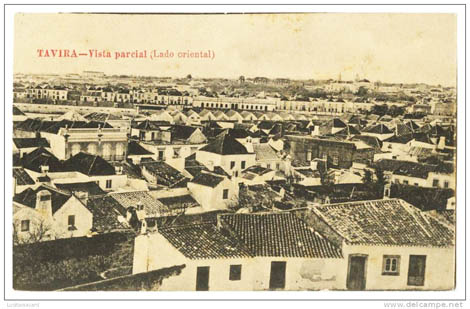 This was followed by lunch at the primary school, which was attended by officials and civilians. After the conclusion of this, new speeches were given by the mayor, local president of the National Union, minister of war, who at a certain point said: “They talk about freedom, but the Dictatorship gives freedom to everyone, except to make bombs or injure the interests of the Motherland by the unleashed passions. The press can discuss doctrinally, but it cannot be a weapon against the community. How many times in the times of politicians has the Constitution been torn up? Question. It was then the validity of a dictatorship of the parties, now it is that of the motherland”.
This was followed by lunch at the primary school, which was attended by officials and civilians. After the conclusion of this, new speeches were given by the mayor, local president of the National Union, minister of war, who at a certain point said: “They talk about freedom, but the Dictatorship gives freedom to everyone, except to make bombs or injure the interests of the Motherland by the unleashed passions. The press can discuss doctrinally, but it cannot be a weapon against the community. How many times in the times of politicians has the Constitution been torn up? Question. It was then the validity of a dictatorship of the parties, now it is that of the motherland”.
President Carmona ended the speeches, having been preceded by Eng. Silva Reis, on behalf of the Junta da Barra and Porto de Tavira.
The Head of State “made a brilliant speech”, in the words of the DN, “declaring himself happy for the reception that he and the Government received”. He later stated that “it is not possible to change the regime, which he considers a betrayal of the Fatherland, provided that with the dictatorship in Portuguese land, all Portuguese can be accommodated. He asked for the union of all under the same banner, without hatred, just with the idea of a happy homeland. Everything that is said about the existence of dangers for the Republic is false”.
The lunch ended with cheers and cheers for the political situation. The president and other ministers then went to Infantry Barracks 4, having been received by the commander, Lieutenant Colonel Velho da Palma, in his office.
After brief dissertations, the head of state, “addressing himself especially to the sergeants, advised them not to be taken in by bad ideas”, according to “O Século”.
Also according to this diary, “at the barracks parade, in front of the formed regiment, Mr. President of the Republic, the delivery of the new flag, embracing the lieutenant who received it, amidst a thunderous round of applause from the large audience”.
Then, new speeches were given, and after the decoration of soldier Manuel Vicente (copper medal for good service), who “in the revolutionary moment of Madeira[2] he behaved heroically, avoiding, at the risk of his life, a great disaster”, as well as the parade of the troops in salute, the head of state and other elements of the delegation visited the remaining quarters of the barracks.
At the end of the visit, an automobile procession was organized again, which left for Vila Real de Santo António, being accompanied to the end of the city by a platoon of cavalry from the GNR.
(Go on)
Read the 1st part of this article here: Read the 2st part of this article here: Read the 3st part of this article here: Read the 4st part of this article here: Read the 5st part of this article here:
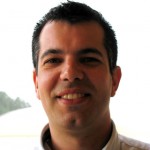
Author Aurélio Nuno Cabrita is an environmental engineer and researcher of local and regional history
[1] Designed by the architect from Tavira Alberto Ponce de Castro, the monument was to be inaugurated the following year, on April 9th (date of the battle of La Lys), by the Minister of War, General Daniel Rodrigues Sousa.
[2] The Madeira revolt took place in April 1931 and assumed a pre-insurrectionary character. For a month, republican deportees, together with local forces disaffected by the regime, maintained political control on the island.


















Comments